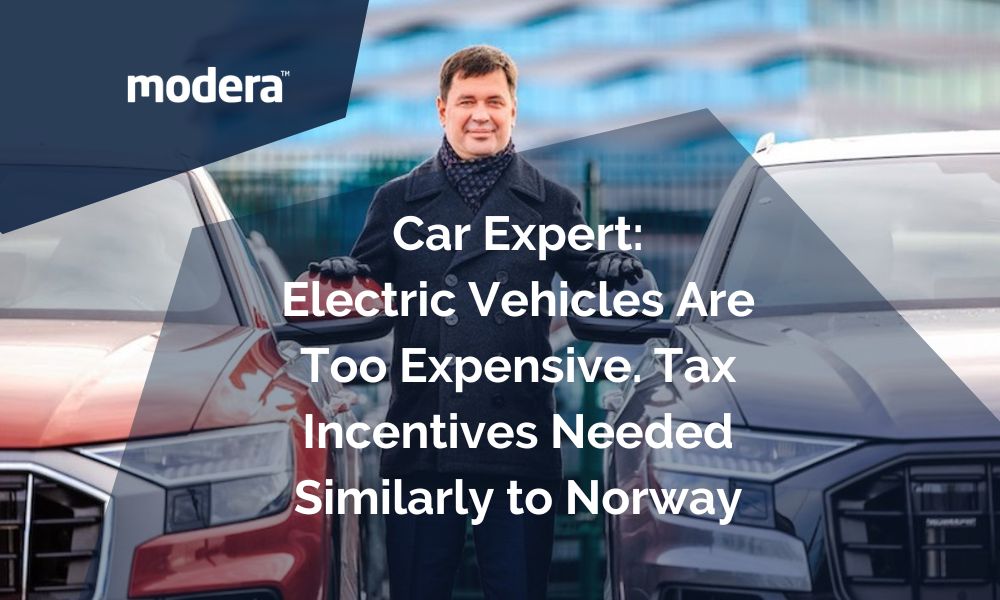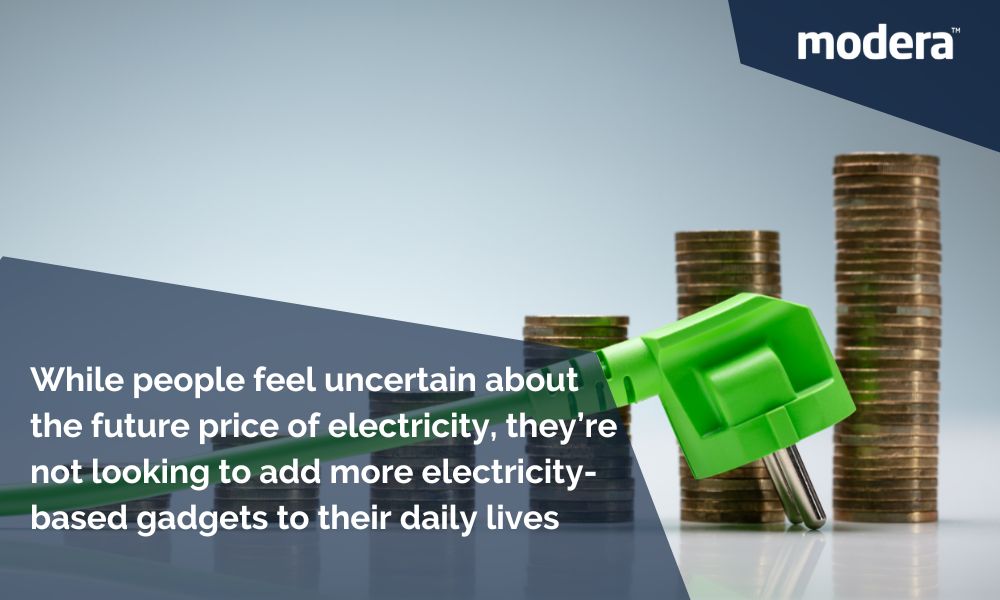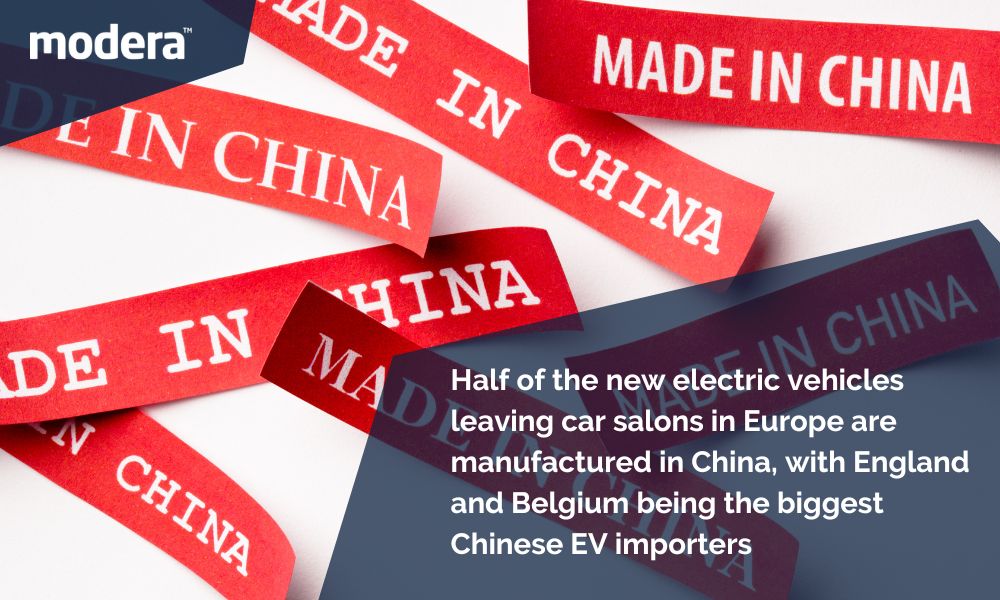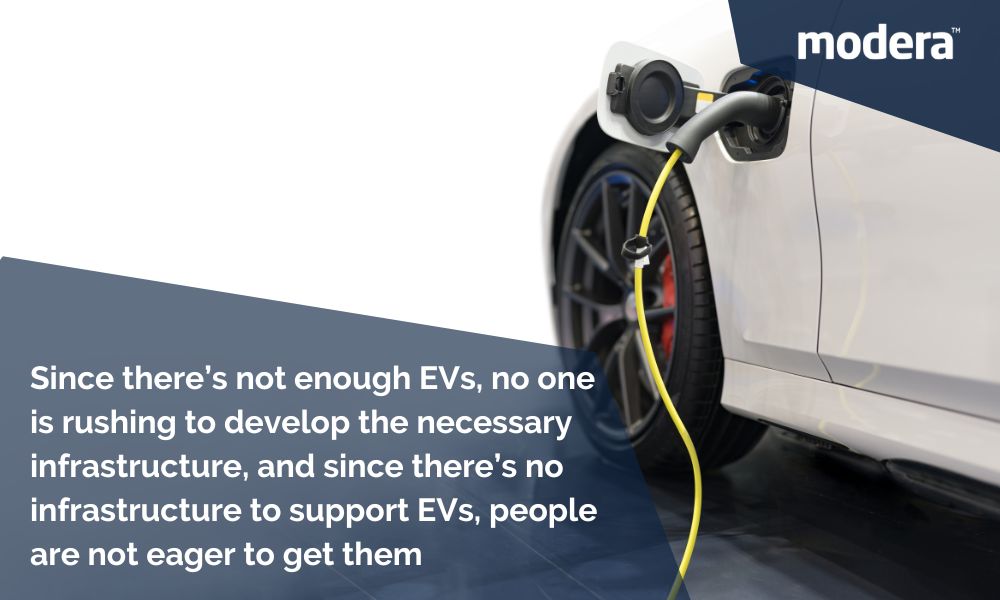
The rumbling skies in Brussels have finally cleared the air above Europe once and for all – in 12 years, we’ll only be able to buy such new cars in Europe that don’t produce any CO₂ emissions. That brings the selection down to electric vehicles and possibly vehicles using synthetic fuels.
This is a serious decision, as it’s basically politicians’ guarantee to car manufacturers, ensuring manufacturers feel safe to invest billions into the future of the market. On the other hand, this also puts quite a lot of pressure on the automotive industry. A nut, that’s yet to be cracked, lies in the shortage of lithium-ion batteries. Although they’ve only been produced in China thus far, there’s every reason to believe that manufacturing units will now also be brought to Europe and the USA.
However, a much bigger challenge is Europeans’ lack of interest when it comes to eco-friendly cars. Last year, the share of electric cars in new car sales in the EU was 12% and yearly increase 3%. These numbers are clearly too low to reach the goal set for 2035. If things keep going the way they’re currently going, the market share of EVs will be a mere 42% in 2032.

Why Is the Share of EVs Growing at a Snail’s Pace?
In a recent energy conference full of powerful shapers of the future, ideas, solutions and energy, participants were asked to raise their hand if they owned an electric vehicle. The fact that only a few hands were raised in a room filled with people directly related to the industry, is definitely a cause for concern.
In many European countries, one of the main reasons people steer clear of EVs, is the insufficient infrastructure of charging stations. However, developing such infrastructure doesn’t require any Harry Potter level magic. On average, people cover around 200 km in a week. That means, a single charge should last a week. 20% of parking spots in parking lots should be equipped with EV chargers.
The next few years will see us in a vicious circle. Since there’s not enough EVs, no one is rushing to develop the necessary infrastructure, and since there’s no infrastructure to support EVs, people are not eager to get them. The only way out of this dead end is to start building the required charging system. We’re going to need it at some point anyway, so why wait?
Another, even more important reason why people are not running to get their hands on an EV, is the heavy price tag. A new electric vehicle will cost you between 40,000 – 60,000 euros. And though some governments have started to pay support to incentivise EV purchases, the amount tends to be way too low to convince consumers. Thus far, the market leader when it comes to EV sales is Norway, where EV sales made up 80% of all new car sales last year.
The reason behind their success is the fact that Norway is aiming to stop the sale of new cars with an internal combustion engine by 2025 already. Tax incentives for electric cars were created in the country back in 2018, while the 25% VAT was abolished. The same year Nissan Leaf made it to the top of most sold cars. That was the first time an electric vehicle was the most sold car of the year.
They’ve also enforced extra taxes to cars with an internal combustion engine, which sets their base price point much higher than that of EVs. If other governments in the EU would lead by Norway’s example, we’d be well on our way to achieving these seemingly unreachable goals.
The third important factor that comes into play when consumers are deciding on their new set of wheels, is the price of electricity. If the price difference between electricity and diesel fuel used to be colossal, it has now tickled down to nothing. While people feel uncertain about the future price of electricity, they’re not looking to add more electricity-based gadgets to their daily lives. A way out of this could be for countries to start producing their own energy, giving consumers some much-needed peace of mind.

Reaching Tesla Levels
The most sold new car in Norway is currently the Tesla Model Y, which comes with a price tag of nearly 50,000 euros. While this is nothing earth-shattering in the Scandinavian country, considering the average salary in many EU countries, owning a car this pricey seems like a far-fetched dream to most consumers.
The good news is, new electric vehicles set to enter the market in the next 2-5 years will definitely help speed things along when it comes to upping the market share of EVs. They should come at a lower price point and better driving range. This should take the growth of the market share of EV sales in the EU to about 10% a year by 2026-2027. That should instill more faith in reaching those ambitious targets by 2035.
Since the purchasing power in all of Europe is declining, there’s a good chance Chinese EV manufacturers will give a helping hand to the European middle class. The Chinese automotive industry made an impressive leap last year, as the sale of EVs originating from China doubled in Europe, despite strict and challenging restrictions posed by the pandemic.
In the big picture, now half of the new electric vehicles leaving car salons in Europe are manufactured in China, with England and Belgium being the biggest Chinese EV importers. The price difference between the models from China compared to those originating from Europe and the US is major. On top of that, the Chinese have implemented a lot of new and innovative digital solutions.
There’s a slight light at the end of the tunnel when it comes to Europe, as Volkswagen recently announced their plans to come out with a 25,000-euro EV – the ID2ALL in 2026. Boasting some serious retro vibes, while being nothing short of futuristic, the secret to success could hopefully lie in the appearance of the car. ID2 is very similar to Volkswagen Golf, which is the most sold Volkswagen model ever.

Whole of Europe will Not be Driving EVs by 2035
There’s no doubt that cars with internal combustion engines will be roaming the streets of Europe for many, many years. Compared to all cars on the road, only 4-5% of new cars are added to the mix each year. There’s also the possibility to buy an internal combustion engine car in 2034 and drive that around for the next decade.
We are currently only at the starting line of a massive process. Cars with internal combustion engines have been used for over a century and we’re now aiming to switch over to electric vehicles within a mere 12 years!
Although feedback from the public makes it seem like we’re nothing short of facing the end of the world, the decision is actually very smart and creates the space for a whole new era in the automotive industry. The most likely scenario is that our habits will change slightly, electric vehicles will become our new daily companions and if all goes well – even friends.
This article is by the CEO of the car sales software company Modera.
